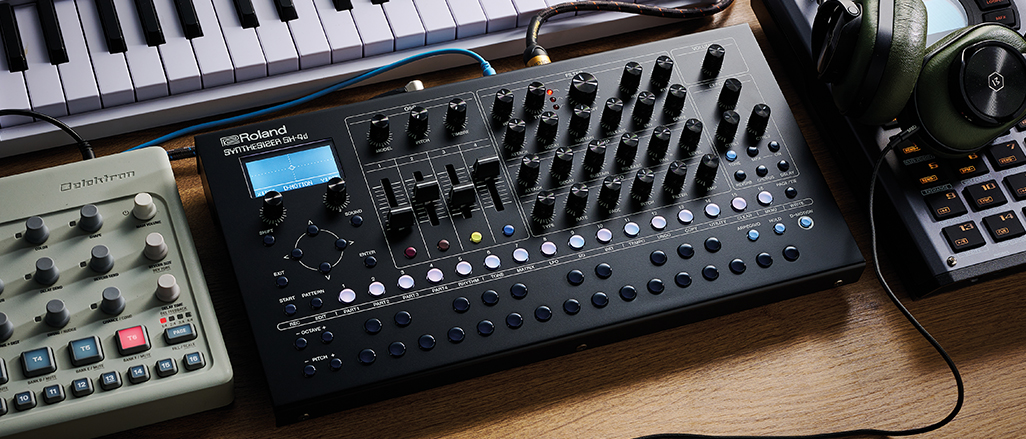MusicRadar Verdict
Roland has released a lot of retro-inspired gear in recent years, but this is something truly new and exciting. A real sonic playground
Pros
- +
Rich and flexible sound, including bang-on 101 and Juno emulations.
- +
Powerful drum machine capable of percussive synthesis.
- +
Flexible sequencing workflow design.
Cons
- -
It’s a shame there aren’t more outputs.
- -
Crying out for a proper keyboard.
- -
No user sound or expansion options.
MusicRadar's got your back
Roland SH-4d: What is it?
Roland’s approach to revisiting its back catalogue has become rather scattershot. Between the Aira, Boutique, Zen-Core and Cloud brands, there seems to be no corner of the Japanese brand’s history left unexplored. We’re at a stage where many classics now have a multitude of modern equivalents across different ranges: you can, for example, currently buy upwards of eight different drum machines or grooveboxes that purport to offer an official recreation of the TR-808.
Into this fray enters the SH-4d, a new digital synth module and groovebox that comes equipped with various emulations of vintage Roland gear. In a typically disjointed fashion, it doesn’t fit neatly into any of the product lines mentioned above. We’re told its engine is based on the Zen-Core format but isn’t compatible with Zen-Core expansions. Conversely, it’s not Aira-branded but will sync with other gear in the range via the Aira Link system. It’s also, however, one of Roland’s best hardware instruments in recent years.
The SH-4d is a five-part groovebox, with four polyphonic synth channels and one multi-track drum machine. Its sound engine makes use of a mixture of virtual analogue, digital synthesis and sampling in order to offer a spectrum of sounds that range from vintage gear emulations to modern tones and an array of percussive kits.
The hardware is compact but not as small and fiddly as the Boutique range. It has a sturdy-feeling metal body with robust-seeming knobs and faders that handle sound design duties. Below these sit a 16-step sequencer and two-octave ‘keyboard’ both of which are made up of shallow, clicky buttons that lack the satisfying heft of a proper TR-series sequencer, but are responsive and spacious enough in use.
The whole unit has a wonderfully retro style, loosely based on vintage SH synths (most notably the late-’70s SH-02). Combined with its sleek, angled profile and restrained black-and-white design, it makes the SH-4d one of the most stylish synths in the current lineup.
On the back panel, there’s a stereo pair of jacks for the main output, a headphone output, and two mini jacks for audio input and an analogue clock input. These are joined by MIDI in and out ports, plus a USB-C port for both power and connection to a computer. Surprisingly, given its size and how much there is going on, the SH-4d can also run on four AA batteries, with a lifespan of around four hours.
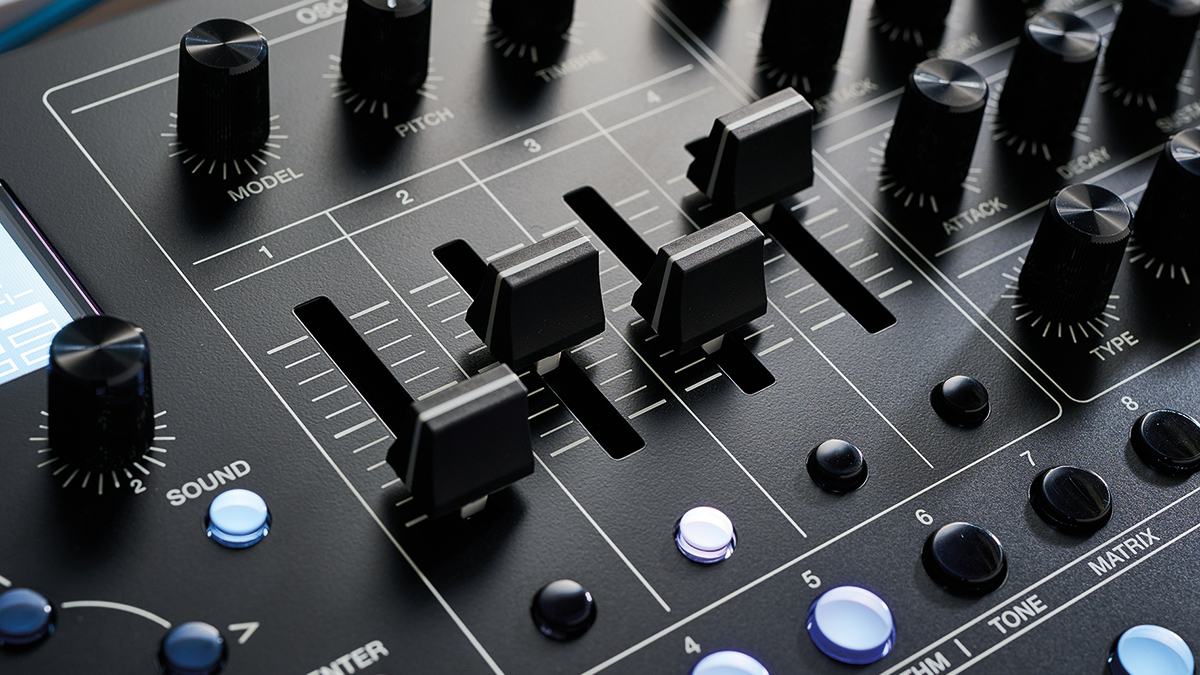
Roland SH-4d: Performance and verdict
The SH-4d offers 11 synthesis modes, available individually for each of the four synth parts, plus a multitude of sequencing features, but the user interface is neatly laid out in a way that makes these fairly easy to navigate. The sound engine controls are broken down into oscillator, filter, amp, LFO and effect sections. Of these, it’s actually only the oscillator section that changes for each synth mode.
Want all the hottest music and gear news, reviews, deals, features and more, direct to your inbox? Sign up here.
The oscillator section is controlled via four faders, each with a selector button, which is joined by Model, Pitch and Timbre rotaries. For the most part, the function of these changes depends on which of the 11 modes is currently in use.
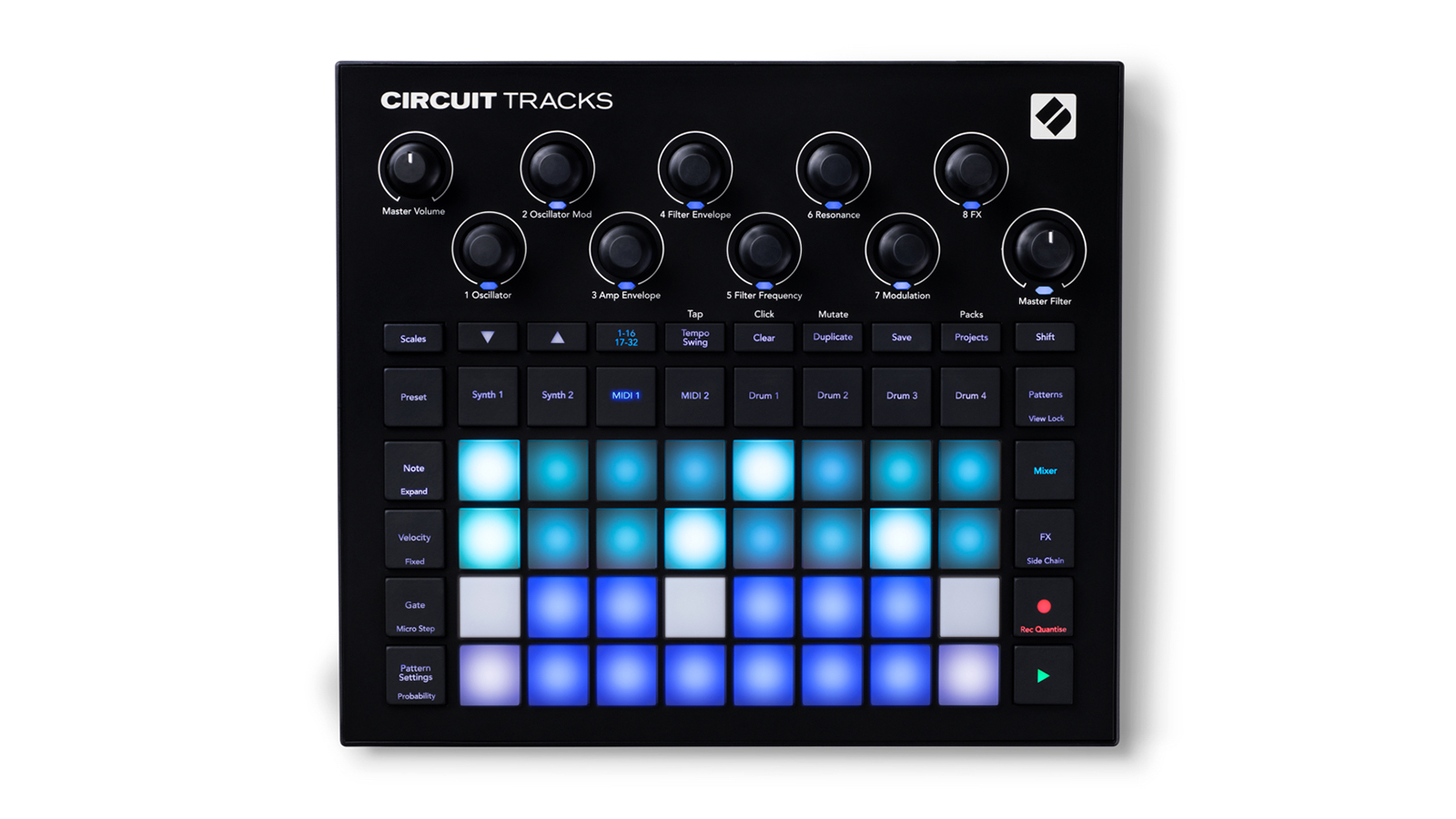
Novation Circuit Tracks
Circuit Tracks offers a similar synths-and-samples ethos, albeit in a manner more immediate but less deep.
Roland TR-8S
If basic rhythm and sample sequencing is what you’re after, the TR-8S is still the other high point of Roland’s current product line.
The first of these modes is the SH-4d engine which gives the instrument its name. This is effectively a four-oscillator virtual analogue synth, where each oscillator can have its own wave shape (including noise and a stacked supersaw mode), plus individual tuning, level and shape/pulse width. The second mode is labelled SH-3D, which is effectively the same oscillator model albeit with the fourth oscillator exchanged for an additional LFO.
The next mode is Sync, which offers a classic hard sync sound with an additional envelope for sweeping the pitch of the synced oscillator. Beyond this is a pair of vintage emulations. The first is a clone of SH-101’s oscillator section, the second is modelled on the oscillators of the Juno-106.
The next oscillator mode is a simple two-oscillator FM setup. Here we have two waves set up in a modulator/carrier relationship. The controls allow for a variety of waveshapes and tuning ratios to be set for each, as well as an adjustable modulation envelope to alter the modulation over time. Continuing in this digital vein, the next mode is a ring modulator, which works well for creating metallic and discordant sounds.
The next oscillator mode is a wavetable mode. This is relatively simplistic by wavetable standards, and probably the SH-4d’s most underwhelming element. There are 31 wavetables on offer, which offer a decent range of interesting harmonic sounds, although there’s no option to upload user sounds. In this mode, an envelope controls movement through the wavetable and the Timbre control introduces LFO sweeps.
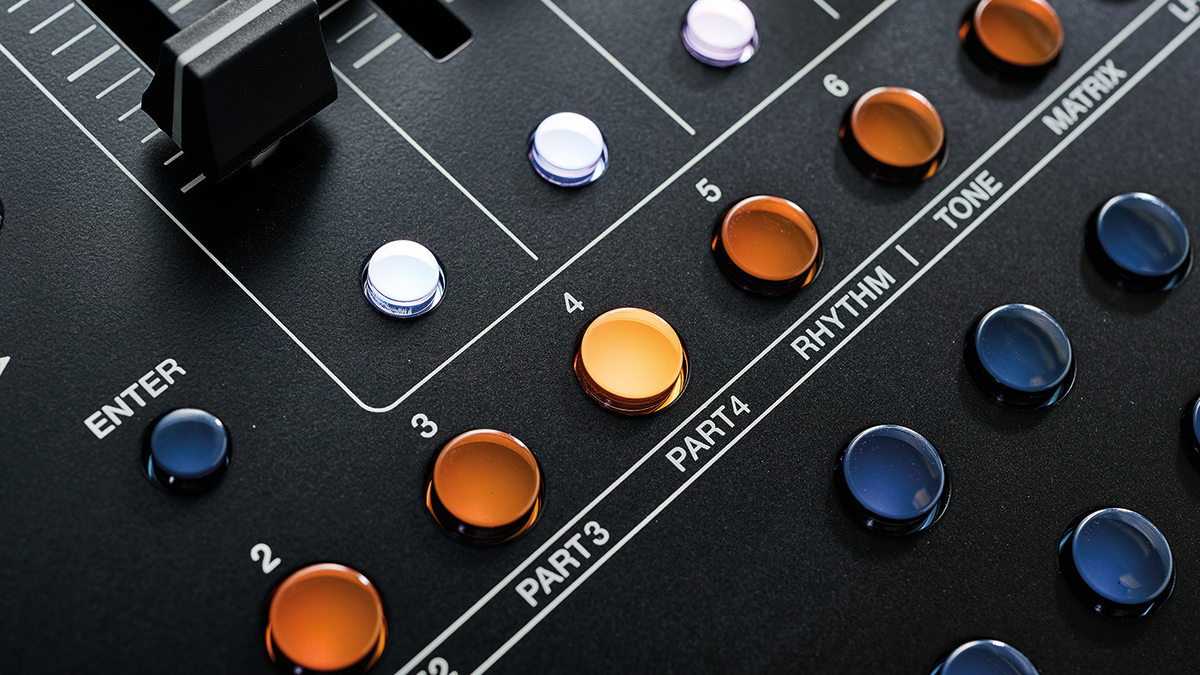
Loadsa modes
The Chord mode, as its name suggests, uses several oscillators arranged to voice a variety of chord shapes. The sound itself in this mode is fairly basic virtual analogue, but it’s great for classic house/techno chord stabs and sequences.
The Drawing oscillator might be the most interesting. Here the sliders and rotaries are used to manually shape the oscillator wave, as represented on the SH-4d’s screen. Using this mode it’s quite easy to conjure results reminiscent of
West Coast synthesis and waveshaping effects.
The final synth oscillator mode is based on PCM samples. This is a fairly functional inclusion, acting a little like an ‘anything else you need’ tool, ticking off whatever boxes aren’t covered by the preceding oscillator types, including samples of a variety of other classic Roland instruments, pianos and organs.
All of these oscillator modes share the same subtractive signal path beyond the oscillator section. First up is a multimode filter with resonance and drive controls. The filter has its own ADSR envelope, plus an additional high-pass filter for rolling off the low end. Beneath this is an amp section with another ADSR envelope, plus pan and level controls. At the bottom sits the multimode LFO section. All of these controls are available for each of the synth parts individually, as well as each individual drum sound (with a few exceptions).
The final element in the chain is the effect section, which can apply processors in several different ways. The first is a multi-functional effect slot applied per part. This has a range of effects, including vintage emulations such as the original Juno chorus (with adjustable noise level), alongside the expected range of reverbs, distortion, delays and much more. This is joined by a trio of effect sends, for reverb, chorus and delay – each switchable between a variety of different models. Rounding this section off is a master effect, applied to the final output, so processing all of the synth and rhythm parts as one.
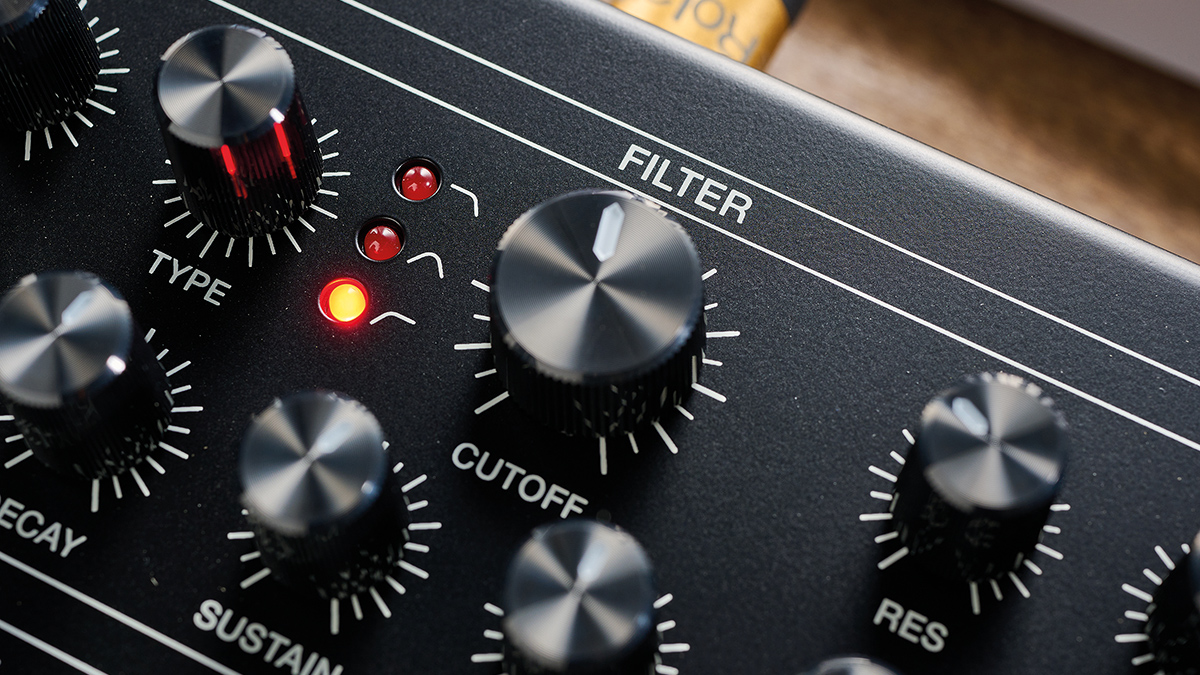
There’s already a lot that can be done with just these up-front controls access via the front panel, but the SH-4d goes considerably deeper through various menus and shift functions. There is, frankly, far too much to go into here, but options include a comprehensive modulation matrix, advanced LFO tools, and a heap of additional options for shaping each oscillator mode.
The sequencer side of the SH-4d is similarly well-equipped. Each part has its own polyphonic sequencer, which can have its own individual sequencer length up to 64 steps, along with an assortment of different playback rates and directions. Each individual note can be assigned its own gate length, velocity and probability settings, on a polyphonic basis for each step. Sub steps allow for flams and ratchets to be programmed. Motion recording allows for parameter changes to be recorded into each step too.
As well as more straightforward step sequencing, the SH-4d also allows for real-time ‘live’ recording, as well as a cool vintage-style step sequencing mode that replicates the more simplistic workflow of the SH-101 sequencer. On top of all this, the SH-4d also finds space for a well-equipped arpeggiator and ‘D-Motion’ function, which lets users make use of a built-in movement sensor to modulate parameters by physically tilting the unit.
Rhythm nation
The SH-4d’s rhythm track is more than just another TR-emulation. This polyphonic section hosts full drum kits of 26 parts. Each part layers two individual drum samples. The range here balances an assortment of classic Roland sound and staple drum tones, but also melodic tones and synth waves. Each drum part features a snappy pitch envelope, meaning the drum engine can be used effectively from drum synthesis too.
Not all of the synth functions are available for each drum sound, but each sound does get its own filter and ADSR amp envelope. It means that, rather than being a basic rhythmic accompaniment, the SH-4d’s drum section is a powerful drum machine in its own right. Combined with the sequencing and automation, there’s a lot of potential flexibility.

There is a lot going on then, more than we can really do justice to in the space of this review.
Possibly more than any other recent Roland device, this really feels like a well-thought-through and complete package, one that offers a whole range of functions for both studio and live users. It also sounds phenomenal. The faux analogue elements are rich and hefty and sound bang on the money when put side by side with their vintage counterparts.
Being able to pair these with the interesting digital modes, and flexible drum design tools is a real treat, and users will likely get a lot out of this one box before even considering integrating it with a DAW or additional gear.
As for weak spots? The lack of additional physical outputs is a shame. As with a lot of other recent Roland gear, the SH-4d can output its individual parts to a DAW via USB, which is handy. For live performance use though it would be nice to have more analogue outputs.
Also, as much as we do like the desktop module format, this is crying out for a proper keyboard version allowing users to properly perform with one of the synth parts. On that front, it’s a shame there’s no option to layer or split the different timbres across a MIDI keyboard.
For some, the lack of user sound upload may be a sticking point – neither wavetable nor PCM engines can make use of custom sounds, and the SH-4d can’t access Zen-Core model upgrades either. Don’t underestimate the flexibility of what’s included though. Given the synthesis capabilities, it makes sense as a self-contained device.
These points aside, this is a rich and flexible instrument with a wealth of functionality that rewards play and experimentation. Among a mass of Roland products, this is the one most worth your attention.
MusicRadar verdict: Roland has released a lot of retro-inspired gear in recent years, but this is something truly new and exciting. A real sonic playground.
Roland SH-4d: Hands-on video
Roland
Roland SH-4d: Specifications

- User Memory Sound Patch: 256. Pattern: 128
- Maximum Polyphony 60 voices (varies according to the sound generator load)
- Parts 5 parts (Tone part: 4, Rhythm part: 1)
- Effects Multi-Effects: 5 systems, 93 types. Reverb: 9 types. Chorus: 5 types. Delay: 5 types. Master Effect: 93 types. Master EQ / Comp
- Arpeggiator 5 types
- Sequencer Parts: 5. Steps: 64. Sub Steps. Flam. Probability
- Controllers Switch Keyboard. Step buttons. D-Motion (motion sensor)
- Display Graphic LCD 128 x 64 dots
- Connectors PHONES jack: Stereo 1/4-inch phone type. OUTPUT jacks (L/MONO, R): 1/4-inch phone type. MIX IN jack: Stereo miniature phone type. EXT CLK IN jack: Mono miniature phone type. MIDI connectors (IN, OUT). USB port: USB Type-C(R) (Audio, MIDI)
- Expected battery life under continuous use Alkaline battery: Approx. 4 hours. Ni-MH battery: Approx. 5 hours
* This can vary depending on the specifications of the batteries, capacity of the batteries, and the conditions of use - Dimensions 360 (W) x 195 (D) x 66 (H) mm. 14-3/16 (W) x 7-11/16 (D) x 2-5/8 (H) inches
- Weight (excluding Batteries) 1,780 g. 3 lbs 15 oz
- CONTACT: Roland
I'm the Managing Editor of Music Technology at MusicRadar and former Editor-in-Chief of Future Music, Computer Music and Electronic Musician. I've been messing around with music tech in various forms for over two decades. I've also spent the last 10 years forgetting how to play guitar. Find me in the chillout room at raves complaining that it's past my bedtime.
